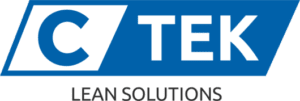How you can implement lean manufacturing in your office
Implementing lean manufacturing into an office environment might not seem intuitive, but it is just as beneficial as implementing the strategy into the production cycle. In a corporate setting, implementing the practice will bring order and efficiency to the workplace. It is easy to make small but meaningful changes that will also increase productivity and create a more effective workforce. If you’re ready to get started, here are several good ways to incorporate lean’s principles into your work environment.
Eliminate Wastes
One of the first steps that you will need to take is identifying wastes and finding solutions to remove them. Wastes can appear in many different aspects of the daily work environment. One is transportation, which can include transportation of material and information. Excess processing and unnecessary and unessential movement involved in transportation can lead to ineffective procedures and routines. Another possible issue is waiting time, which can be evaluated in the amount of time it takes to relay information to a customer or colleague and return a phone call. Over-production, which can include a variety of office-related tasks such as excessive and unfocused meetings and reports, is also a common source of waste. Products may also be defective, which can then be considered the dissemination of inaccurate information.
Identify Value
At the same time that you identify wastes and work to remove them, you will also want to identify activities and processes that add value. This first requires an assessment of processes and activities that add value in the office’s environment and those that don’t. You can also use lean tools to reduce or eliminate wastes.
Create a New Value Stream
After identifying items, activities, and processes that add value, you’ll want to create a new value stream as a standard process. The process will ensure that value continues to be a priority in your daily work experience. In order to implement a value stream, you’ll first want to review existing processes and procedures so that you can identify any areas where improvements are warranted and make adjustments accordingly. Adding in activities such as training sessions, meetings, and lectures will promote employee engagement and help employees see the value and impact of their daily work.
Recommend Improvements
Once you have determined the sources of waste in your office’s environment, the next step is to create change. One of the simplest and most effective changes that you can make is to reduce the processing time of activities from start to finish. Reducing the amount of work in each process is also beneficial in creating a more productive and streamlined work environment. Keeping less inventory on hand and reducing backlogs also stimulates efficiency and minimizes waste. Reducing transportation in between units is valuable for promoting efficiency, and you can also reduce the number of process steps it takes to carry out a goal or deliver a product. Balancing activities and identifying products is also important, as is having the flexibility to respond to any changes that might arise with customer requests and demand for products.
Continuous Improvements
Introducing recommendations for improvements is a good start, but you’ll want to make sure that improvements continue to be implemented later on. The general concept is simple, which is that one you make one improvement, you shouldn’t simply stop there. Instead, you can continue to make improvements for maximum efficiency and effectiveness. You may find that your daily work environment becomes even more efficient as a result, and you can also ensure that a high quality of performance continues.
Contact C Tek today for more suggestions on how to successfully incorporate lean strategies into your office environment.
